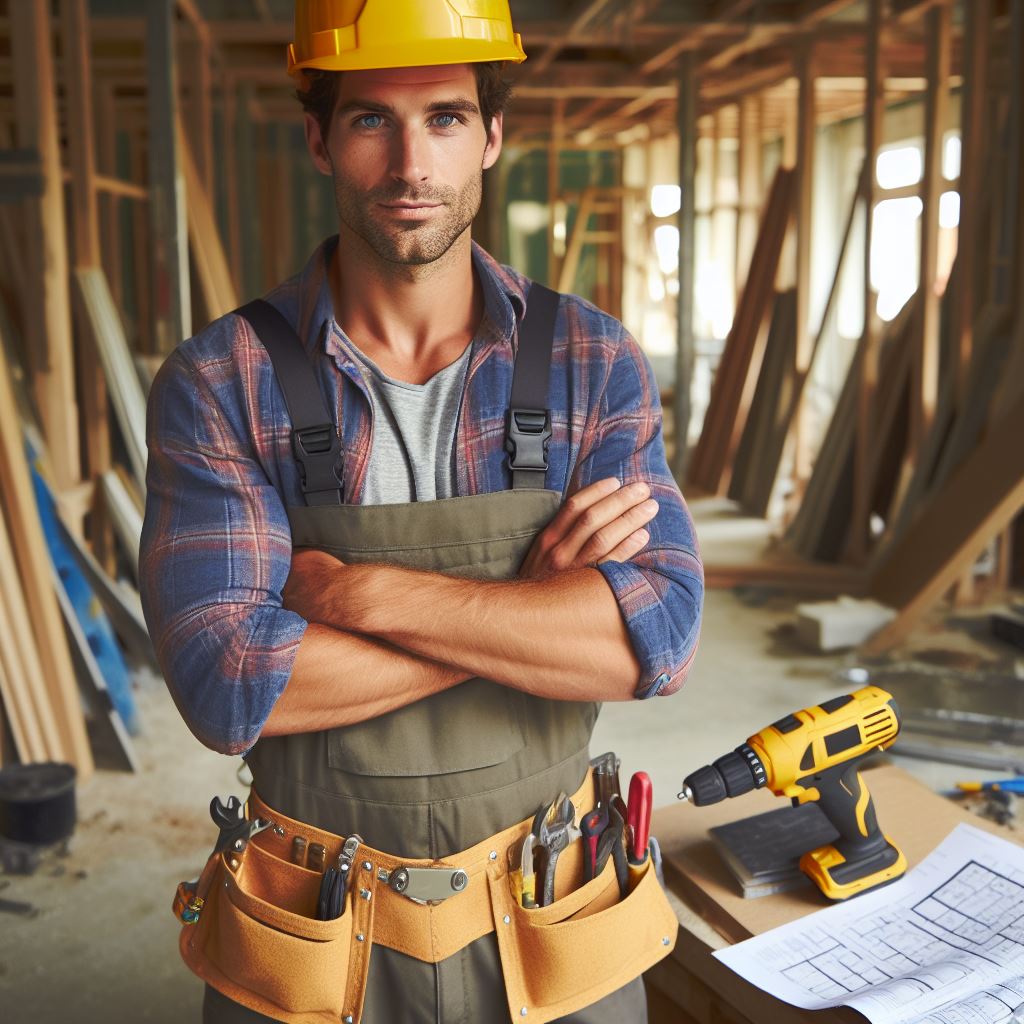Introduction
Building codes and compliance in Australia
Building codes and compliance are crucial in ensuring the safety and quality of construction projects in Australia. These regulations and codes are implemented to protect the public, as well as to maintain the integrity of buildings.
In Australia, building codes are comprehensive and cover various aspects of construction, including design, materials, and installation. Compliance with these codes is mandatory and enforced by local authorities, ensuring that buildings are constructed to meet certain standards.
Importance of building codes in ensuring safety and quality
The importance of building codes cannot be overstated. They help prevent accidents, protect occupants, and ensure that buildings are structurally sound. Compliance with these codes also helps maintain public confidence in the construction industry.
Australian building regulations and codes
Australian building regulations are primarily governed by the National Construction Code (NCC), which is a set of performance-based codes. The NCC is regularly updated and sets the minimum requirements for construction, including fire safety, structural soundness, and sustainability.
Compliance with building codes involves various stakeholders, including architects, engineers, builders, and building surveyors. These professionals must ensure that their designs, materials, and construction methods meet the requirements of the codes.
In addition to the NCC, there are also other regulations and codes that may be applicable depending on the location and type of construction. These can include state and local building codes, as well as specific regulations for certain sectors like healthcare or education.
In general, building codes and compliance are essential for ensuring the safety and quality of construction projects in Australia. They provide a framework for construction professionals to follow, ensuring that buildings are built to meet certain standards and protect the public.
Compliance with these codes is mandatory and enforced by local authorities to maintain the integrity of the construction industry.
Top Aussie Building Codes & Compliance Tips
Building Code of Australia (BCA)
The Building Code of Australia (BCA) is a set of national standards and regulations that govern the construction industry in Australia.
Overview of BCA and its Purpose
- BCA ensures that all new buildings meet minimum standards of safety, health, amenity, and sustainability.
- It provides guidance on various aspects of construction, such as structural integrity, fire safety, and energy efficiency.
- The primary purpose of BCA is to protect the health and safety of occupants and promote sustainable building practices.
Key Requirements and Provisions of the BCA
- Structural Requirements: The BCA outlines standards for the design and construction of a building’s structure to ensure its stability and longevity.
- Fire Safety: The BCA mandates measures to prevent the spread of fire, such as fire-resistant materials, smoke alarms, and fire sprinkler systems.
- Energy Efficiency: The BCA sets minimum requirements for insulation, glazing, and lighting to promote energy-efficient buildings and reduce environmental impact.
- Accessibility: The BCA includes provisions to ensure that buildings are accessible to all individuals, including those with disabilities.
- Plumbing and Sanitation: The BCA outlines standards for plumbing installations, drainage systems, and sanitary facilities to maintain public health and hygiene.
Tips for Complying with the BCA
- Familiarize Yourself: Stay updated with the latest version of the BCA and understand its requirements applicable to your project.
- Engage Professionals: Seek the advice of architects, engineers, and building surveyors who are knowledgeable about the BCA.
- Plan Ahead: Incorporate BCA compliance into the design and planning stages to avoid costly modifications later.
- Documentation: Maintain accurate records and documentation of all BCA-related compliance measures implemented during construction.
- Regular Inspections: Conduct regular inspections to ensure ongoing compliance with the BCA throughout the construction process.
- Training and Awareness: Provide training to your construction team regarding the BCA requirements and their responsibilities.
- Seek Certifications: Consider obtaining relevant certifications, such as Green Star or NABERS, to demonstrate compliance with sustainability measures.
- Engage Building Certifiers: Engage professional building certifiers who can assess compliance and issue the necessary certifications.
- Maintain Compliance: Regularly review and update your building practices to incorporate any new amendments or changes in the BCA.
- Stay Informed: Attend industry seminars, workshops, and conferences to stay informed about new developments in building codes and compliance.
Complying with the Building Code of Australia is crucial for ensuring the safety, efficiency, and sustainability of construction projects.
By understanding the BCA, following its requirements, and implementing best practices, builders can create quality structures that meet the highest standards of compliance and enhance the overall built environment in Australia.
National Construction Code (NCC)
The National Construction Code (NCC) regulates Australian building construction, ensuring minimum safety, health, and sustainability standards.
Its key section, the Building Code of Australia (BCA), covering structural integrity, fire safety, and accessibility, undergoes regular updates.
Compliance requires builders to stay updated on changes, classify buildings correctly, and engage stakeholders for early issue identification.
Regular inspections during construction, conducted by qualified professionals, are vital for prompt issue rectification.
Documentation, including detailed records of design plans and construction processes, serves as evidence during inspections and audits.
Compliance extends beyond construction; ongoing maintenance, repairs, and upgrades are crucial for adherence to NCC requirements.
Understanding key sections, adhering to updates, involving stakeholders, conducting inspections, and maintaining documentation are vital for compliance.
Following these steps ensures builders contribute to constructing safe, sustainable, and high-quality buildings in Australia.
Read: Plumbing 101: A Beginner’s Guide in Australia
Accessibility standards
Accessibility standards ensure that buildings are accessible to individuals with disabilities, promoting inclusivity and equal opportunities. These standards aim to create an environment where everyone can navigate and use spaces independently.
To meet accessibility requirements, buildings must comply with various regulations. These regulations outline specific design criteria that ensure accessibility. They cover aspects such as entrances, hallways, doorways, ramps, elevators, handrails, signage, and more.
Here are some key aspects of disability access requirements
- Entrances: Accessible entrances must be provided to allow wheelchair users to enter the building easily. These entrances should have ramps or lifts, wide doors, and level thresholds.
- Hallways: Hallways should be wide enough for wheelchair users to navigate comfortably, with proper handrails for support.
- Doorways: Doors should be wide enough to accommodate wheelchair users, typically around 32 inches. Lever-style handles are often preferable to knobs for easier access.
- Ramps: Ramps should have an appropriate gradient to ensure easy wheelchair access. They should also have handrails on both sides for safety.
- Elevators: Buildings with multiple floors must have accessible elevators that can accommodate wheelchairs. Elevators should have clear signage, Braille markings, and audible announcements.
- Restrooms: Accessible restrooms are crucial for individuals with disabilities. They must have wider doors, grab bars, lower sinks, and accessible fixtures.
- Parking: Accessible parking spaces should be designated close to the building entrance, with proper signage, suitable width, and a nearby access aisle.
To ensure compliance and create accessible spaces, consider these tips:
- Consult with Accessibility Experts: Involve accessibility consultants or experts during the design and construction stages to ensure compliance with specific accessibility codes and standards.
- Conduct Regular Inspections: Regularly inspect the building to identify any accessibility barriers or non-compliant areas. Promptly address these issues to maintain compliance.
- Train Staff: Provide training to staff members on disability awareness and ways to assist individuals with disabilities. This will foster a better understanding and inclusive culture within the building.
- Clear Signage: Install clear and visible signage throughout the building, including room numbers, restroom signs, and directional indicators. Braille signage is essential for individuals with visual impairments.
- Lighting and Acoustics: Proper lighting and acoustics are crucial for individuals with visual or hearing impairments. Ensure well-lit spaces and consider acoustic treatments to minimize noise-related difficulties.
- Accessible Technology: Incorporate accessible technology, such as hearing loops for hearing aid users, visual notification systems, and adjustable workstations, to support individuals with different disabilities.
- Ongoing Maintenance: Regularly maintain accessibility features such as ramps, elevators, automatic doors, and handrails to ensure they remain fully functional.
Inclusivity in building design and construction is vital. It promotes equal access, independence, and dignity for all individuals, regardless of their abilities.
By considering accessibility standards and compliance tips, buildings can provide barrier-free environments that benefit everyone.
Read: How to Become a Plumber in Australia
Your Personalized Career Strategy
Unlock your potential with tailored career consulting. Get clear, actionable steps designed for your success. Start now!
Get Started
Discover More: Australian Building: Heritage vs. Modern
Fire safety regulations
Ensuring fire safety in Australian buildings is paramount to prevent disasters, necessitating strict compliance with regulations to safeguard occupants and property.
Australian building codes incorporate rigorous fire safety measures during construction, emphasizing fire-resistant materials and proper installation of safety equipment.
Occupancy demands functional fire safety systems like smoke detectors, alarms, and sprinklers, mandating regular inspection and maintenance for proper functionality.
Non-compliance results in penalties, urging building owners to stay updated on fire safety codes and consult experts for guidance and effective safety plans.
Fire evacuation plans marked exit routes, regular drills, and clear access to fire doors aid swift evacuations.
Proper storage and disposal of flammable materials reduce fire risks, while fire safety signage guides occupants during emergencies.
Accessible and regularly inspected fire extinguishers, emergency lighting, and tested alarm systems are essential components.
Record-keeping of inspections, tests, and maintenance activities ensures accountability, including fire-rated components and hydrants.
Fire safety audits by professionals identify deficiencies and enhance compliance, educating occupants on safety measures and evacuation.
Evacuation plans should consider individuals with disabilities, and staff training ensures efficient emergency responses.
Proactive approaches, regular inspections, and training promote a safe environment, protecting lives and property.
Compliance not only mitigates risks but also enhances building safety and value, emphasizing the importance of investing in fire safety measures.
Read: The Future of Plumbing Tech in Australia
Find Out More: A Day in the Life of a Mech Engineer in Sydney
Sustainable building codes and practices
Sustainable building codes and practices have become increasingly important in Australia as the need for environmentally friendly construction grows.
Green building codes in Australia focus on reducing the environmental impact of buildings throughout their lifecycle.
Here are some tips for incorporating sustainable features in construction
- Use renewable energy sources such as solar panels or wind turbines to power the building.
- Implement rainwater harvesting systems to reduce reliance on mains water supply.
- Maximize natural lighting and ventilation to reduce the need for artificial heating and cooling.
- Choose sustainable building materials such as recycled timber, bamboo or low VOC (volatile organic compounds) products.
- Integrate energy-efficient appliances and fixtures to reduce energy consumption.
- Install insulation to improve thermal performance and reduce energy usage for heating and cooling.
- Design landscaping with native plants that require minimal water and maintenance.
- Incorporate effective waste management systems to minimize construction and operational waste.
- Use sustainable construction practices that prioritize minimizing environmental impact.
- Opt for green certification programs such as Green Star or NatHERS to ensure compliance with sustainable building practices.
There are numerous benefits of sustainable building practices for both the environment and occupants
- Reduced energy consumption leads to lower greenhouse gas emissions and helps mitigate climate change.
- Improved indoor air quality due to the use of low VOC materials and proper ventilation systems.
- Enhanced occupant comfort through optimal temperature regulation and natural lighting.
- Savings in water usage and costs through efficient water management systems.
- Reduced waste generation and landfill burden by incorporating recycling and waste reduction strategies.
- Increased property value and market appeal, as sustainability features are highly sought after.
- Positive public image and corporate social responsibility recognition for developers and organizations.
- Long-term cost savings for building owners and occupants through reduced energy and water bills.
- Creation of healthier and more productive indoor environments that promote occupant well-being.
- Preservation of natural resources and ecosystems through responsible construction practices.
Ultimately, sustainable building codes and practices play a crucial role in creating environmentally friendly and energy-efficient buildings in Australia.
By incorporating sustainable features into construction, we can reduce our carbon footprint, improve indoor comfort, and contribute to a healthier and more sustainable future for all.
Read: Top Plumbing Trends in Australian Engineering
Conclusion
Importance of building codes and compliance in Australia
In short, building codes and compliance play a crucial role in Australia’s construction industry.
They ensure the safety, functionality, and sustainability of buildings. Adhering to these codes is necessary to avoid legal consequences and ensure a high standard of work.
Final thoughts on the top Aussie building codes and compliance tips
Throughout this blog, we have discussed various Australian building codes and compliance tips. We have explored the importance of fire safety regulations, disability access requirements, and energy efficiency guidelines.
These codes and regulations are designed to protect the well-being of occupants and the environment.
Encouragement for professionals to stay updated on the latest regulations and recommendations
Staying updated on the latest building codes and compliance recommendations is essential for professionals in the construction industry.
Building standards are constantly evolving, and it is crucial for architects, builders, and other professionals to stay informed and adapt their practices accordingly.
By following the top Aussie building codes and compliance tips, professionals can ensure that their projects meet the highest standards of quality and safety.
It is important to prioritize the health and safety of occupants, as well as the long-term viability of the built environment.
In closing, building codes and compliance are not just guidelines to be followed; they are integral to the success of any construction project.
By understanding and implementing these codes effectively, professionals can contribute to a safer and more sustainable built environment in Australia.




